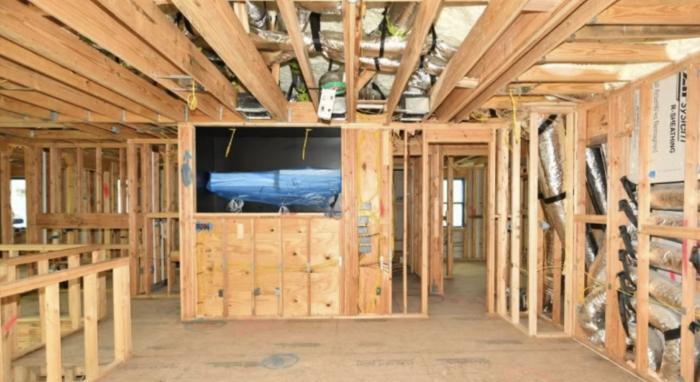
As a builder focused on high-performance construction, I'm always interested in new technologies or approaches to solving problems, so when Panasonic reached out to me in early 2024 to come see their new way of designing HVAC systems, I jumped on the opportunity. The system, called Oasys, had just been roughed-in at their test house in Houston, so I booked a flight and headed to Texas.

What is Oasys?
The idea is to use existing, efficient technologies to design an HVAC system that solves many of the problems in today's high performance homes. The system would provide constant air flow throughout the house at a lower velocity than standard systems, replenishing the air in each room continuously, and be responsive to changing conditions in each room. Compared to a traditional HVAC system, this would reduce noise, provide a more even temperature within a room, and have more precise control over the individual rooms.
I was able to walk the house with the builder, Curtis Lawson of Crafted Custom Homes, who did a great job with it and took the time to present it to us and answer all of our questions. As he put it "Ultimately it's about healthy and comfortable living... but you also get the advantage of a highly energy efficient and effective system."
How does it work?
Oasys is built around three pretty basic pieces of technology: mini-splits, bath fans, and an ERV. Mini splits are placed in a dedicated, centralized room where at least one bath fan per room is mounted to a wall and ducted to their individual rooms. The average house might have somewhere around 20 fans mounted on this wall. On the opposite wall from the fans is a large opening that acts as a filtered return (MERV 6 filter). The room outside the return is where the ERV (MERV 13 filter) mixes outside air with the existing indoor air. As the bath fans run, the air is pulled through the filtered return, conditioned by the mini-splits, and distributed throughout the house by the fans. These fans run at a steady low speed to replace the air in each room 3.5 - 4 times per hour. Each room in the house has its own Swidget sensor that can measure the temperature/humidity, indoor air quality, motion, or other factors. Those sensors report back to the system and can request a boost of air from that room's fan if the measured input is outside of tolerances. That additional air helps bring those levels back to normal, and then the sensor ends the call for the additional boost.
The benefits
The continuous air flow and Swidget sensors solve several problems better than traditional HVAC systems.
Comfort - Constant air flow allows for a lower speed of air, meaning you won’t feel or hear the air blowing as much. They didn’t tell me this specifically, but I would bet the steady circulation allows supply air to stay closer in temperature to the room air, reducing condensation risk and improving comfort.
Dehumidification - Those additional air changes also give your system more opportunities to dehumidify the air in humid climates. (That could be a downside in dry climates, but I would bet a portable humidifier in the centralized conditioning room could solve that problem.)
Adaptability - The Swidget sensors are one of the biggest sellers for me. Zoning traditional split systems isn’t responsive enough for modern buildings. Even with high performance details, a South-facing primary bedroom with a lot of windows will have vastly different air conditioning needs than a kitchen or a north facing loft space. Traditional systems might have those on the same zone linked to a thermostat in a centralized hallway. That thermostat would dictate how your system would respond to your indoor conditions, even though all three spaces have very different needs. With Oasys, each space has a sensor that can respond in real time to that room’s specific conditions. If a bedroom is heating up with the sunrise, the sensor can call for a boost and bring the temp in that specific room back down. If the air quality in your kitchen is dropping because you’re cooking on your stove, a boost of new conditioned air can help dilute the pollutant levels there.
Concerns or questions
No system is perfect for all situations, I would say I had more questions about the system than I did concerns though.
Air Mixing - I do wonder if the lower air speed is enough to consistently mix the air throughout each room or if you’ll have hot and cold corners. Duct design will play a huge part in that, I’m sure.
Filtration - The filtration is also not nearly enough for a healthy home. I get that the outside air being pulled through the ERV through a MERV 13 filter and, theoretically, all the air in the house should get exchanged through that eventually. Is that really filtering out all of the dust, pet hair, PM2.5 particles, and everything else floating throughout the house though? I’d like to see them up the interior filter wall to MERV 13 as well, especially with off the shelf filters.
Early Adoption - There’s also always risk in being an early adopter. Even though this system has been used in Japan for years, it’s new to our market and our installers. You’ll likely pay more for the system than you should because HVAC companies and builders don’t fully know the risks they’re taking and want to ensure they don’t lose money on these jobs.

Notice the centralized mechanical room in the Oasys system (blue ducts). The ERV mixes outside air in the adjacent living room.
What else do you need?
It's important to note that this system isn't set up to be used in leaky homes that are under insulated. The home has to be well-insulated and a good bit better than code when it comes to air tightness (although still not difficult to do on a new build). You also need a centralized location for all of the equipment, be it in the middle of the home at a living level or in a conditioned attic or crawl space. During the design phase of the home, Panasonic will work with the project's architect to create the space needed for the equipment and air mixing and do the modeling necessary to properly size the room and equipment.

Wall of fans roughed in

Mini splits and return wall

Return wall from the living room

Slat wall to hide the return grille
Other questions
Is the system noisy? I haven’t seen it fully up and running yet, so I can’t speak from experience. I do know that Panasonic makes some of the quietest fans on the market. Combine that with the size of the wall return filter (which they considered sound in the design), and I would be shocked if Oasys wasn’t significantly quieter than a standard split system.
What does the maintenance look like? Honestly, maintenance seems like a dream with Oasys. Everything is easily accessible and most products are basically off-the-shelf if one ever fails. Even if they stop making a specific fan that you have, I don’t see why you couldn’t use a different kind in its place.
The PROs
-
The Oasys system is incredibly energy efficient. The main components are mini-splits and bath fans which are some of the most efficient products on the market.
-
Using existing and simple technology means it's easy to install, maintain, and repair. If one of the fans breaks, the average homeowner could swap it out for a new one.
-
The continuous flow of air, combined with the outside air from the ERV, means you'll have consistently healthier air inside your home.
-
Changing the air in each room ~3.5 times per hour gives the system more opportunities to dehumidify and filter the air (although I do think additional humidity controls are probably needed).
-
Because it uses a lower velocity of air flow, it's both quiet and comfortable. You won't hear the air moving through the grilles and you won't feel like you're getting blasted with hot or cold air when you're standing by a vent.
-
Since you're circulating the air so much more than a standard system, the air coming from the vents won't need to have as large of a temperature differential than the other air around you (again, more comfortable)
-
The Swidget sensors make the system acutely responsive to each space within the home. Any room can be individually automatically responded to, instead of relying on a centralized thermostat that might treat an entire floor the same.
The CONs
-
The main drawback to the design seems easily fixable: a lack of filtration. The MERV 13 filter on the ERV is good, but only having a MERV 6 filter on the main return isn't enough. Using off-the-shelf MERV 13 filters or higher would be a big upgrade.
-
Not all home layouts will work for the space needed for Oasys and it isn't usually a good option for a retrofit.
-
I worry about how well the air will mix with the lower velocity of air flow. You'll have a smaller "throw" on the air (great post by Allison Bailes on this), but maybe you make up for that by the consistency of air flow?
-
This system does require more duct work than traditional ones and will likely need open web trusses to be able to route them where they're needed. That and the design fee from Panasonic can result in a higher initial cost.
-
I think Panasonic is going to limit how widely they can implement Oasys if they force the design to go through them. Right now the architecture has to get tweaked and approved by their partner architecture firm and Panasonic has to do the energy modeling and calculations. If they could put out guidelines for architects, existing home certification programs, and home consulting companies to handle these aspects, I think they'd get much faster adoption (and more helpful feedback).
Overall
If you're looking for an incredibly efficient HVAC system that can be responsive to changing conditions in each room of your new home, I think the Oasys system is worth looking into. It won't be the right solution for every house, but it could be a great solution for many. I'm looking forward to visiting the house again now that it’s completed to see how it's performing.
If you have questions about the OASYS system or about the high performance homes we build at New South Homes, you can reach me directly at chris@newsouthhomes.com.
I want to give a special thanks to Toner Kersting (Toner Home Performance) for introducing me to the system, Curtis Lawson (Crafted Custom Homes and Your Project Shepherd Podcast) for building a great house and walking us through it, and Ken Nelson (Panasonic) for speaking to our BS* & Beer Atlanta group about Oasys.
- Filed Under: Heating, Ventilation, Air Conditioning (HVAC)
- Keywords : Energy Efficiency, HVAC, High Performance, HVAC Design, Bath fans, ERVs, Mini Splits, comfort, Exhaust fans
- ( 5056 ) views

New South Homes is a Builder/Renovator in Metro Atlanta that takes a holistic approach to your home project. From pre-construction planning, to construction, and even ongoing maintenance, we want to build for homeowners who care about not just the quality of the craftsmanship, but also the comfort, longevity, indoor air quality, and more.
- ( 0 ) Ratings
- ( 0 ) Discussions
- ( 0 ) Group Posts
Reply/Leave a Comment (You must be logged in to leave a comment)
Connect with us!
Subscribe to our monthly newsletter:
 Greenbuild Report Out, 2025 Nov 12, 2025
Greenbuild Report Out, 2025 Nov 12, 2025










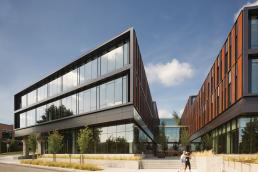
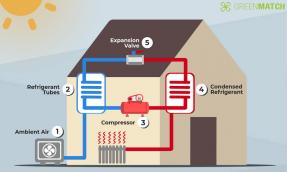
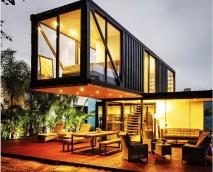
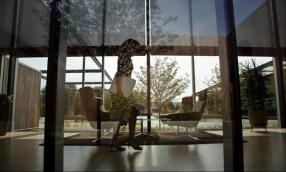













Not a Member Yet? Register and Join the Community | Log in